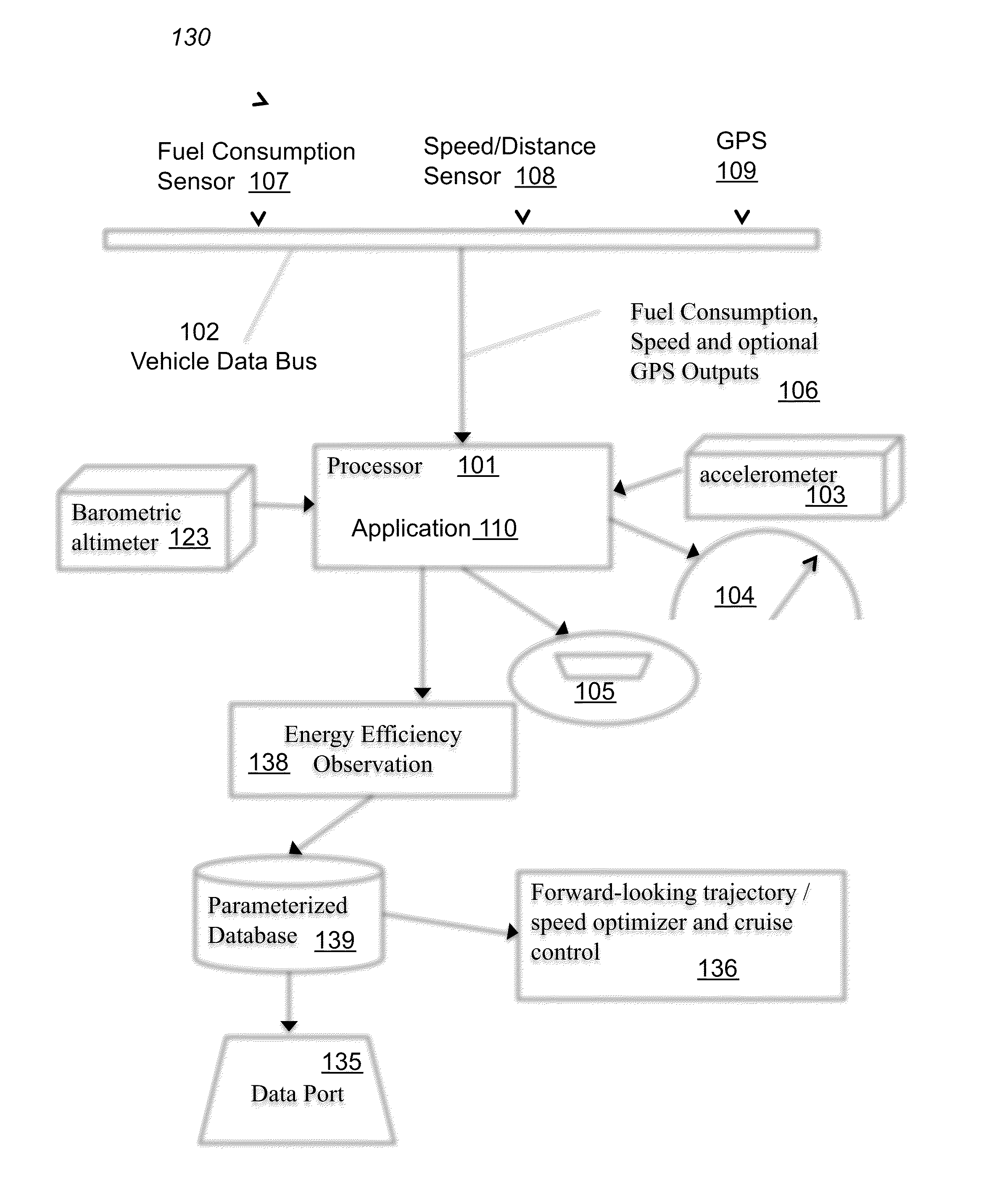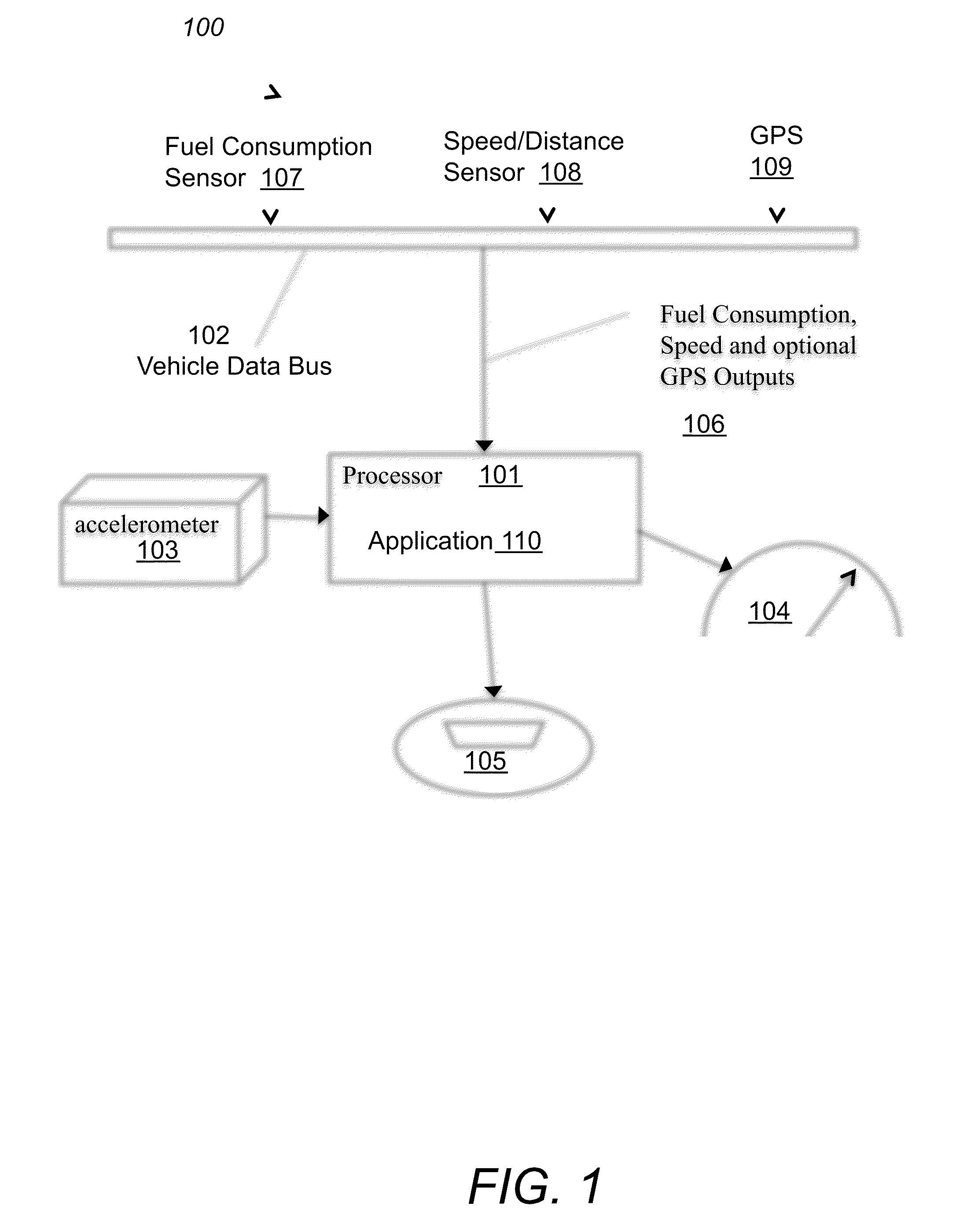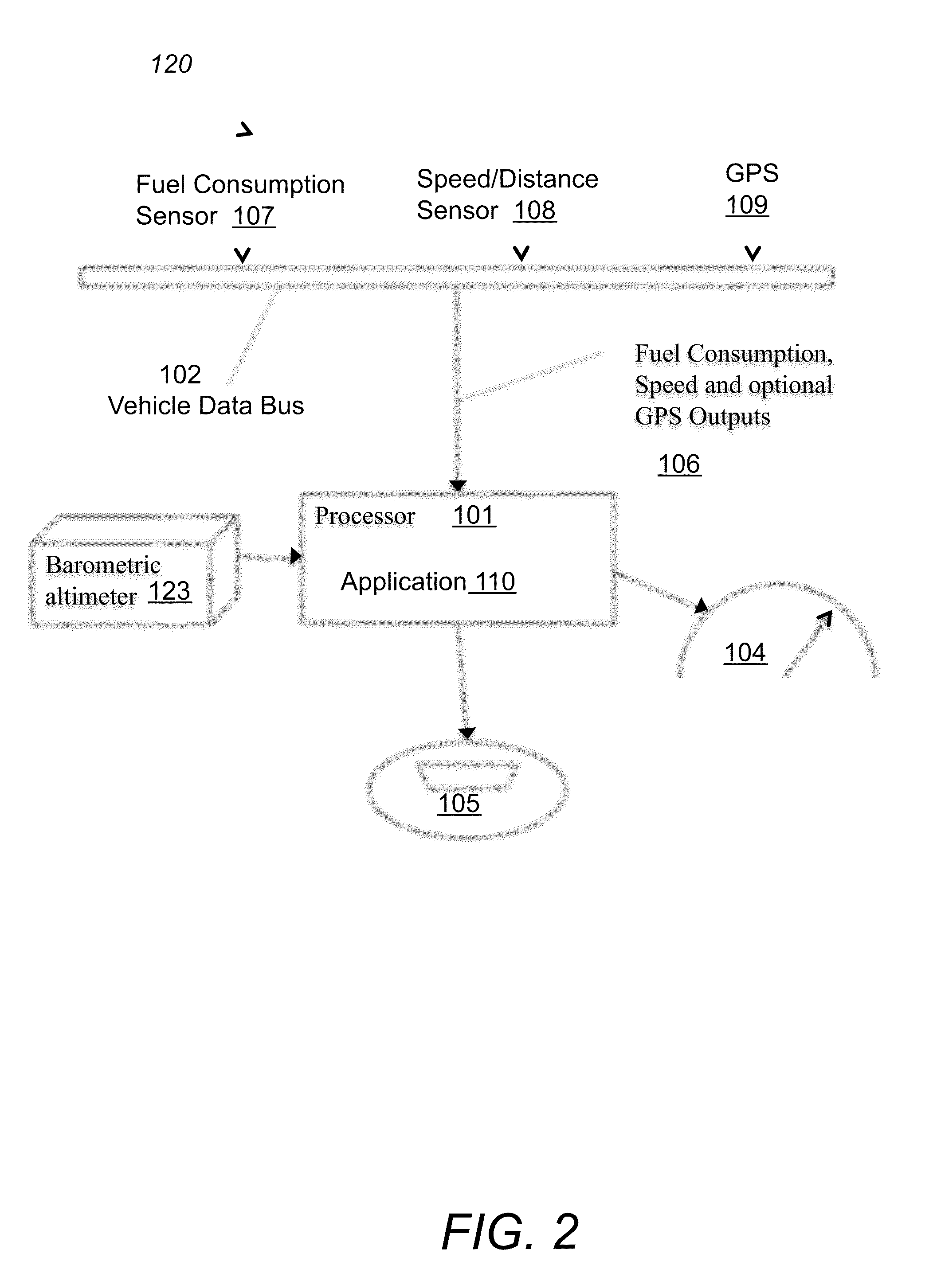System and method for measuring energy efficiency in vehicles
a technology for energy efficiency measurement and vehicle, applied in the field of improved, to achieve the effect of reducing costs
- Summary
- Abstract
- Description
- Claims
- Application Information
AI Technical Summary
Benefits of technology
Problems solved by technology
Method used
Image
Examples
second embodiment
[0023]Referring to FIG. 2 in a second embodiment, a system 120 for measuring energy efficiency in vehicles includes a processor 101 or other circuitry designed to perform the required calculations, a vehicle data bus 102, a barometric altimeter 123, a gauge 104, a sound producing device 105, fuel consumption sensor 107, distance / speed sensor 108, GPS 109 and application 110. Processor 101 receives fuel consumption data and speed or distance data 106 from the vehicle's data bus 102 plus optionally information from a navigation system such as GPS. The fuel consumption data, distance / speed data and GPS data are provided to the vehicle bus 102 by the fuel consumption sensor 107, distance / speed sensor 108, and the GPS 109, respectively. If appropriate, the calculation device 101 receives these data directly from some or all of the corresponding sensors (i.e., fuel consumption sensor 107, distance / speed sensor 108, and GPS 109) instead of collecting it from the data bus 102. Processor 101...
third embodiment
[0024]Referring to FIG. 3 in a third embodiment, a system 130 for measuring energy efficiency in vehicles includes a processor 101 or other circuitry designed to perform the required calculations, a vehicle data bus 102, a barometric altimeter 123, an accelerometer 103, a gauge 104, a sound producing device 105, a fuel consumption sensor 107, a distance / speed sensor 108, GPS 109 and application 110. System 130 also includes energy efficiency observation data 138, database 139, data port 135 and a trajectory / speed optimizer and cruise control system 136. Processor 101 receives fuel consumption data and speed or distance data 106 from the vehicle's data bus 102 plus optionally information from a navigation system such as GPS 109. The fuel consumption data, distance / speed data and GPS data are provided to the vehicle bus 102 by the fuel consumption sensor 107, distance / speed sensor 108, and the GPS 109, respectively. If appropriate, the calculation device 101 receives these data direct...
fourth embodiment
[0025]Referring to FIG. 4, in a fourth embodiment, a system 140 for measuring energy efficiency in vehicles is implemented in a portable handheld computing device 141. In one example, handheld computing device 141 is an iPhone. In other examples handheld computing device 141 is an iPad, iPod, a Smartphone or a personal digital assistant, among others. Handheld computing device 141 includes a display 144, a processor 148 or other circuitry designed to perform the required calculations, accelerometers 143, a GPS 149, and an application 150. Handheld computing device 141 is mounted to the vehicle chassis via mounts 147 and receives power and data from the vehicle data bus 142 via a plug-in interface 145. Plug-in interface 145 is connected to the vehicle data bus 142 via the vehicle's On-Board-Diagnostics (OBD-2) port 153 and an interface electronics box 154 that is plugged into the OBD-2 port. Application 150 is used to calculate the vehicle energy efficiency as described below and to ...
PUM
 Login to View More
Login to View More Abstract
Description
Claims
Application Information
 Login to View More
Login to View More - R&D
- Intellectual Property
- Life Sciences
- Materials
- Tech Scout
- Unparalleled Data Quality
- Higher Quality Content
- 60% Fewer Hallucinations
Browse by: Latest US Patents, China's latest patents, Technical Efficacy Thesaurus, Application Domain, Technology Topic, Popular Technical Reports.
© 2025 PatSnap. All rights reserved.Legal|Privacy policy|Modern Slavery Act Transparency Statement|Sitemap|About US| Contact US: help@patsnap.com



